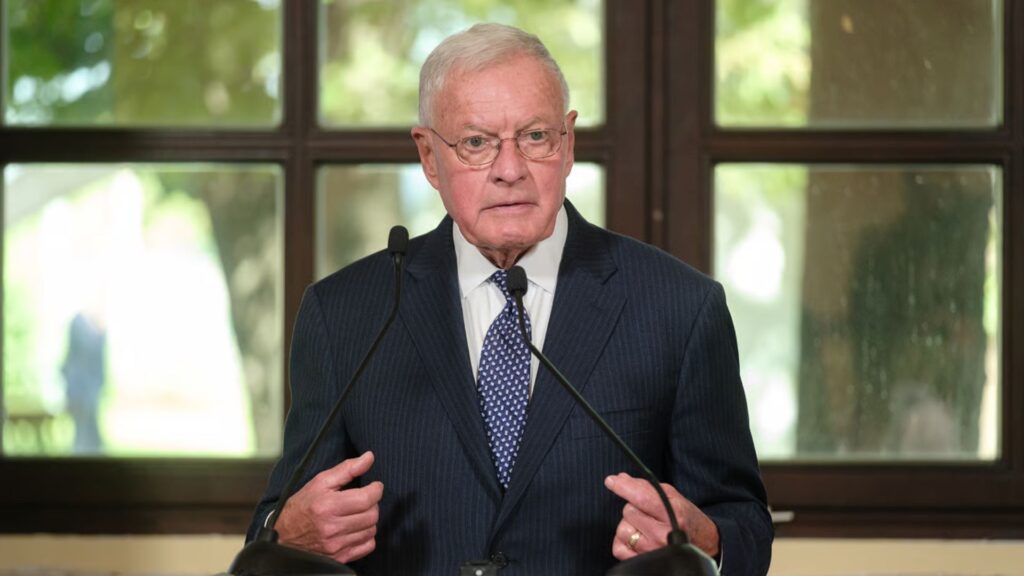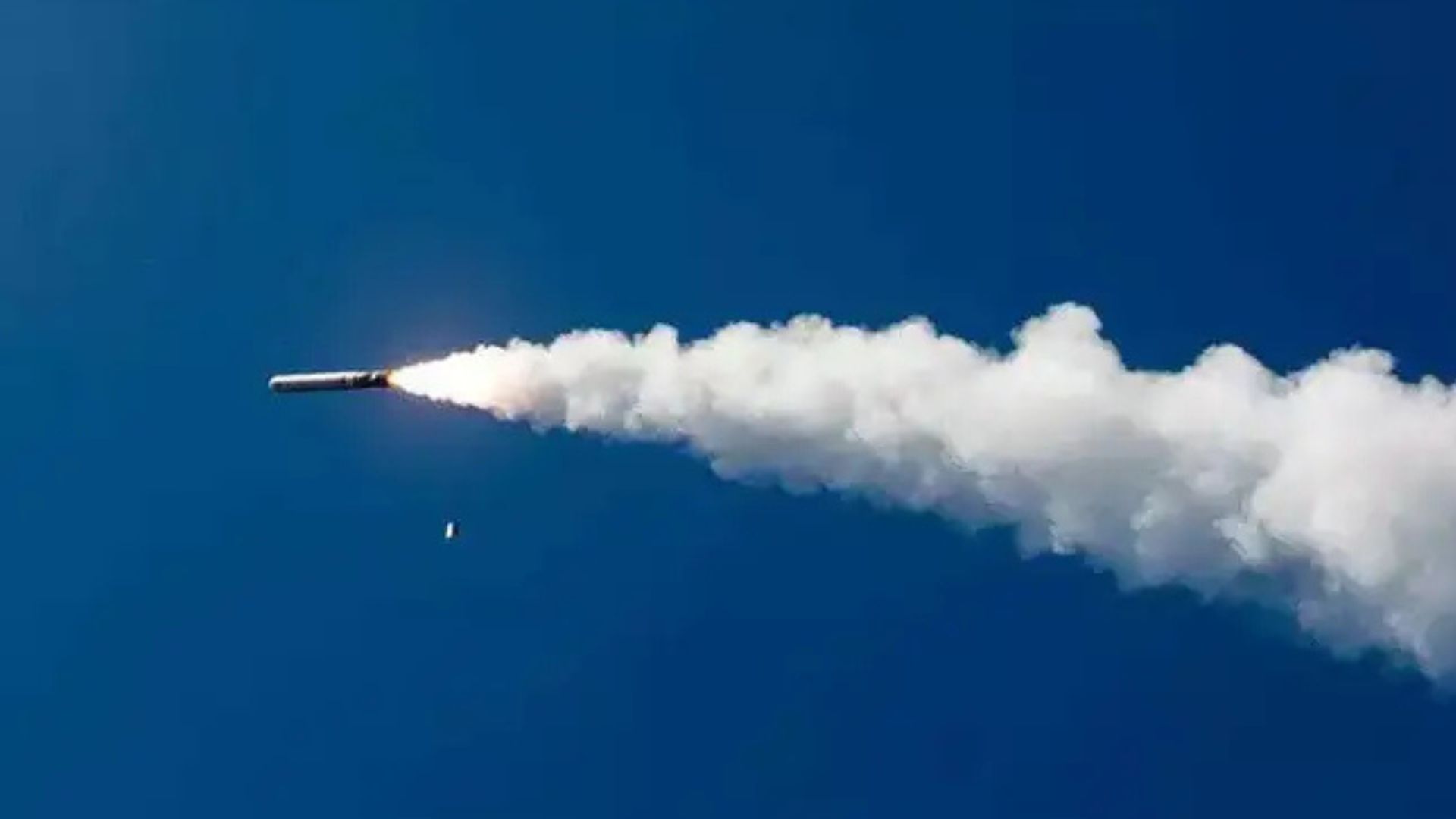
President Donald Trump has authorized Ukraine to conduct long-range strikes deep inside Russian territory, marking a significant shift in U.S. military policy that could dramatically alter the trajectory of the Russia–Ukraine conflict. The decision, confirmed by Special Envoy Keith Kellogg on Fox News Sunday, removes prior restrictions on Ukrainian strikes and signals unprecedented American support for expanding Kyiv’s operational reach (Economic Times).
Background
Since the 2022 Russian invasion of Ukraine, U.S. policy under both the Trump and Biden administrations prohibited Kyiv from using American-supplied long-range weapons to strike targets across Russia’s sovereign borders. This constraint aimed to avoid direct confrontation between NATO and Russian forces and to keep the conflict contained within Ukrainian territory. Under this framework, Ukraine received Patriot air-defense systems, HIMARS rocket launchers, and other defensive weapons—but long-range cruise missiles remained off-limits.
Policy Change and Pentagon Response
The authorization represents a major escalation in U.S. support for offensive Ukrainian operations. On Fox News Sunday, when asked if Trump had “authorized Ukrainian strikes inside Russia,” Special Envoy Keith Kellogg replied, “The answer is yes. Use the ability to hit deep. There are no such things as sanctuaries” (Economic Times).
Despite the President’s directive, Pentagon officials have reportedly withheld approval for specific long-range missions, creating tension within the administration (Novyny.Live). Kellogg criticized the defense department’s resistance, emphasizing that “everybody should follow what the President says. He’s the Commander in Chief, by the Constitution, and everybody falls in line” (Economic Times).
Republican Representative Don Bacon accused Defense Secretary Pete Hegseth of “frequently” obstructing Trump’s authorization, posting on social media that “the Pentagon consistently obstructs these actions” (Novyny.Live). This internal friction underscores ongoing debates in Washington over balancing escalation control with demonstrating unwavering support for Ukraine.
Tomahawk Missiles Under Consideration
Alongside the policy shift, the White House is considering supplying Ukraine with Tomahawk cruise missiles—long-range, sea- and land-launched weapons with a range of up to 2,500 kilometers. These missiles could theoretically reach Moscow if launched from Ukrainian-operated platforms (Economic Times).
Vice President J.D. Vance confirmed that the administration is “looking at” providing Tomahawks through European NATO allies. “We’re certainly looking at a number of requests from the Europeans,” Vance stated, noting that Trump will make the final determination on any weapons transfer (Economic Times).
If approved, Tomahawks would represent the most advanced long-range strike capability provided to Ukraine since the war began, vastly expanding Kyiv’s ability to target Russian military infrastructure, airfields, and logistics hubs far behind the front lines.
Russian Reaction
The Kremlin has responded cautiously to the U.S. decision. Kremlin spokesman Dmitry Peskov said Moscow is “carefully analyzing” the situation and questioned whether American personnel would be involved in targeting the missiles (Pravda). Despite recognizing the threat, Peskov asserted that “there are no miraculous weapons that would transform the battlefield situation” (Pravda).
International and Political Implications
Providing Ukraine with long-range strike authority and the potential transfer of Tomahawk missiles carries significant diplomatic and strategic implications:
- Escalation Risk: Moscow could interpret the move as open-ended support for Ukraine’s offensive, potentially prompting retaliatory strikes against NATO assets or increased military deployments along Europe’s eastern flank.
- Alliance Dynamics: European NATO members supplying Tomahawks would become direct contributors to cross-border strikes, deepening their military involvement and possibly exposing them to Russian countermeasures.
- Domestic U.S. Debate: Republican and Democratic lawmakers are likely to clash over the wisdom of expanding Ukraine’s strike capabilities, balancing deterrence against fears of widening the war.
Future Outlook
The authorization comes at a critical juncture. Ukraine has repeatedly requested expanded strike capabilities to disrupt Russian supply lines and degrade command centers in far-rear areas. With the winter campaign looming, Kyiv may seek to leverage long-range weapons to preempt Russian offensives.
However, implementation challenges remain. The Pentagon’s reluctance to greenlight individual missions—and the complexity of training Ukrainian crews on Tomahawk systems—could delay operational deployment. Furthermore, Russia’s threat of reprisals, including cyberattacks and escalated air defenses, may temper how aggressively Ukraine employs its newfound strike authority.
As the conflict enters its fourth year, Trump’s decision to empower Ukraine with long-range strike options signals a decisive turn in Western policy, one that could reshape military dynamics on the Eastern Front and redefine thresholds for escalation across Europe.









